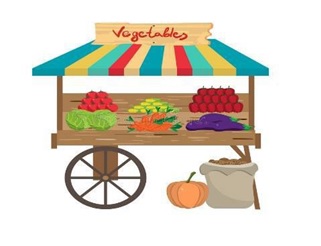Learning Library
Go To--> Learn About | Benefits | SNAP
Article: Farmers’ Markets and FoodShare
Farmers’ Markets and FoodShare
Table of Contents
- Farmers’ Markets and FoodShare
Farmers’ Markets and FoodShare
By the GWAAR Legal Services Team

Congress created the Supplemental Nutrition Assistance Program (SNAP) to improve access to nutrition for low-income individuals. The historically popular program transitioned from paper stamps to electronic, debit-like cards in the early 2000s. This change made shopping at local farmers’ markets difficult. In response, the Department of Agriculture (USDA) launched the Free SNAP Wireless Equipment Program, which covers the initial costs of equipment and software licenses for farmers and markets. Since its inception in 2012, 2,500 markets have received card readers, tablets, or smartphones to process SNAP benefits, according to the Washington Post. As a result, beneficiaries have been able to shop for fresh, local food products.
To accomplish this, the USDA contracted with a company called Novo Dia, which created and operated Market Match Plus (MMP), an app allowing FoodShare benefits (Wisconsin’s SNAP program) to be processed at farmers’ markets on the USDA devices. However, on July 31, Novo Dia, terminated its nation-wide operation. MMP was the only software that operated with Apple devices and processed both FoodShare and its incentive programs.
According to the Wisconsin Public Radio, 18 markets used the app, representing 38% of the farmers’ markets accepting FoodShare benefits in the state. Although most markets in Wisconsin currently use other services and can still accept payment, some services may still be interrupted. The Washington Post reported, on a national level, that the company processed around 40% of SNAP transactions at markets and the termination left 1,700 of the 7,000 markets nationwide that accept SNAP with no means to process the benefits.
Luckily, the National Association of Farmers Market Nutrition Programs (NAFMNP) has stepped in to provide Novo Dia with funds to continue the program for an additional 30 days to prevent an immediate disruption in services. Hopefully, this will provide enough time to find a long term, workable solution for this sudden loss of technology. NAFMNP is a non-profit organization with the mission of supporting producers who sell at farmers’ markets and increasing farmers’ market sales.
The USDA’s Food and Nutrition Service program is exploring alternatives so that farmers’ markets can continue to accept payments and there is no prolonged impact to FoodShare members. As of now, neither the USDA or Novo Dia has published a list of which farmers’ markets will be impacted after the 30 days afforded by NAFMNP, but many local newspapers and stations have reported on the status of their local markets.
Sources:
USDA Statement: https://www.fns.usda.gov/pressrelease/2018/fns-0005-18
Wisconsin Public Radio (Hope Kirwan): https://www.fns.usda.gov/pressrelease/2018/fns-0005-18
Washington Post (Jane Black and Leah Douglas): https://www.washingtonpost.com/lifestyle/food/some-food-stamp-recipients-may-soon-lose-access-to-farmers-market-benefits/2018/07/09/fafb2caa-838d-11e8-8f6c-46cb43e3f306_story.html?utm_term=.f4291e72ce62
Copyright GWAAR, 2018
Last Updated on 10/5/2018